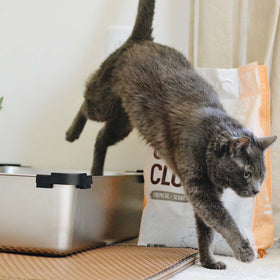
Cut the Sit
Getting dogs to sit is one of the first things we do when we bring them home, it’s second nature to most owners. Dogs are made to sit before getting meals, crossing the street, entering/exiting the home, when another dog or person is coming towards them, and countless other scenarios. Even complete strangers will ask a dog to sit. For example, places like the bank or your favourite retail shop will have treats at the ready, more often than not, the giver of the snacks will request a sit before dispensing the tasty reward.
It all seems like a very natural exchange. But is sitting actually “natural”? Given the choice would they sit in these situations? Let’s examine some overlooked considerations when it comes to our dogs and sitting.

A puppy’s developing body
As puppies dogs are taught to sit: when they first come home, and when they attend obedience class – often up to 30 times in just one lesson. That’s a serious workout at any age, but puppies, in their early growth stages are very vulnerable due the softness of their developing skeletal system. Their muscles and joints are weak, they’re growing, and this development takes time. For these youngsters sitting repeatedly is like young babies doing squats. The repetitions put undue pressure on their growing bodies which can lead to damage or injury at this vital growth phase.
Vulnerable older pooches
Seniors, and dogs that have experienced injury can have a very hard time sitting down and getting back up. The action required puts pressure on their lower back, hips and surrounding muscles. For some, especially those with arthritis, it’s probably very painful. There are certain breeds, larger, heavier ones, ones that have a more rounded/elasticated spines, greyhounds for example, who are not designed for sitting; it’s hugely uncomfortable for them.
Forcing the “sit”
We should also think about what happens when they don’t sit. Sometimes, they’re forced down with physical pressure to their butt, or perhaps a tightened collar may persuade them. Both completely unnecessary and physically harmful. If they must learn to sit on command there are many effective, respectful and humane ways of teaching them.
Ask "why"?
Our favourite dog trainer (and mentor) Turid, would encourage you to be curious about why we ask certain things of our dogs. How does it serve them? Reflect on this with your own dog and you may find that you don’t have a real answer. It’s just what you’ve always done, or observed around you, or been taught.
Instead of the sit
One of the easiest, and most valuable life skills to teach is “wait”. This can be done with a simple hand signal and be used in all manner of situations: crossing the street, leaving the home, before a meal is put down. It’s easily communicated, clear for them to understand, effective and gentle, removing any possibility of pain or discomfort.









